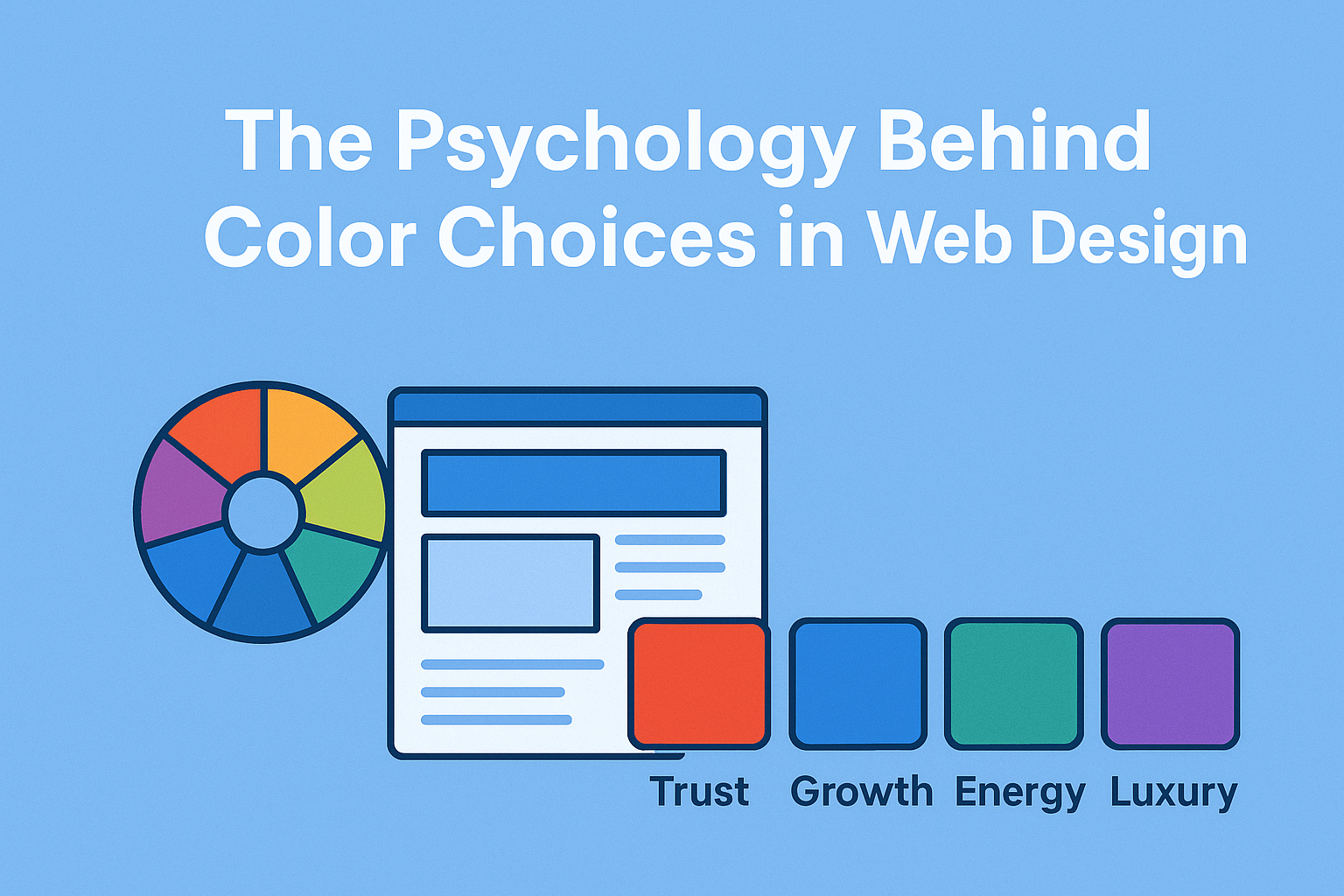Introduction
Colors aren’t just visuals—they shape emotions, decisions, and trust. In web design,
the right color palette can increase conversions, while the wrong one can repel users.
Let’s explore how colors influence user behavior in 2025.
The Science of Color Psychology
- Users form impressions in 90 seconds.
- 62–90% of judgments are based on color.
- Colors trigger subconscious emotional responses.
Key Colors & Their Meanings
- Red → Urgency, energy, passion (great for CTAs).
- Blue → Trust, professionalism, reliability (finance, healthcare).
- Green → Growth, health, wealth (eco-brands, wellness).
- Orange → Confidence, friendliness (retail, startups).
- Purple → Creativity, luxury, wisdom (beauty, premium brands).
Color Combinations That Work
- Monochromatic: Clean, elegant (e.g., shades of blue).
- Complementary: High contrast (blue & orange).
- Analogous: Natural harmony (green & yellow).
- Triadic: Balanced vibrancy (blue, red, yellow).
Cultural Differences
- White: Purity in the West, mourning in some East Asian cultures.
- Red: Luck in China, danger in Western contexts.
- Green: Nature worldwide, but money primarily in the US.
Practical Application
- 60-30-10 Rule: 60% dominant, 30% secondary, 10% accent.
- Test with A/B experiments.
- Always consider accessibility (color contrast, text readability).
Conclusion
Color psychology helps create trustworthy, engaging websites that convert. Thoughtful
color choices align with branding while enhancing UX.
👉 CTA: Want a color strategy that increases conversions? Talk to our UI/UX experts
today.


